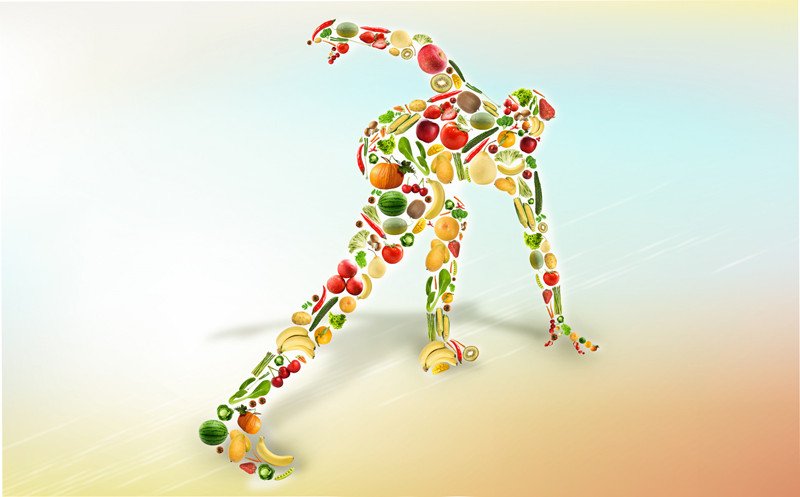1 Definition, classification and audience of sports nutrition food
1.1 Definition
Sports nutrition food is a type of food related to sports, but the definition of sports nutrition food in different countries and regions is not completely unified. Generally speaking, the definition has meanings related to sports and the human body.
The European Union defines it as all products put on the market and used by sports people. According to China’s latest GB24154-2015 “National Food Safety Standard Sports Nutrition Food General Principles”, sports nutrition food belongs to a category of special dietary foods, and its definition refers to satisfying the sports crowd (referring to participating in physical exercise 3 times a week and The above, each duration of 30 minutes or more, each exercise intensity of moderate or above) physiological metabolic state, exercise capacity and special needs for certain nutritional ingredients specially processed foods.

1.2 Classification
Different countries and markets have different classification methods for sports nutrition food. Most of them are classified by-products, and some are classified according to the audience. The European Union divides sports nutrition foods into three categories according to product categories, namely sports drinks, muscle-building and accelerated recovery after exercise, protein-based products, and products that continue to replenish energy and improve athletic ability.
In the United States, there are more detailed classifications of sports nutrition foods. Among them, sports or energy drinks accounted for the largest proportion, close to half of the total sales. Followed by sports nutrition supplements, weight loss meal replacements, nutrition bars, weight loss tablets and low carbohydrate foods.
The Canadian Bureau of International Markets divides sports nutrition foods into two categories according to consumer groups, namely sports people and non-sports people. Sports consumers are subdivided into bodybuilders, athletes and amateur sports enthusiasts. Non-sports users are users who advocate a healthy lifestyle.
The Chinese standard uses two methods to classify sports nutrition foods. According to the characteristic nutrients, the products are divided into energy supplement type, energy control type and protein supplement type. According to the sports that consumers are engaged in, they are divided into speed-strength, endurance and post-exercise recovery products.
1.3 The role of sports nutrition food
According to the definition of sports nutrition food, its main function is to meet the physiological metabolic state, exercise ability, and special needs of certain nutrients of the sports crowd. The use of sports nutrition food has obvious effects on improving physical fitness, supplementing nutrition, maintaining physical fitness and vitality, providing sports ability, and promoting fatigue recovery of sports people. For example, energy-supplemented sports nutrition food, with carbohydrates as the main component, can provide energy quickly or continuously, and can meet the rapid and large-scale demand for energy of the human body during exercise. Protein supplement sports nutrition food is based on protein or protein hydrolysate as the main component, providing high-quality protein to the human body, which can meet the needs of body tissue growth and repair.

1.4 Audiences of sports nutrition food
The audience of sports nutrition food is mainly sported people, the number of which is quite large, and can be divided into professional or amateur athletes participating in competitive sports, and people who regularly participate in physical exercise. At present, there are about 10,000 professional (or professional) athletes participating in competitive sports in China. There is no data report on the number of athletes in amateur sports schools and sports colleges. A survey in 2007 showed that the people in China who regularly take part in physical exercise (including primary and middle school students) accounted for 28.2% of the total population or 340 million people. In 2013, the survey results of the physical fitness activities and physical fitness of the 20-69-year-old population showed that the proportion of the number of people who regularly participate in physical fitness reached 32.7%, which rose to 33.9% in 2014.
The proportion of American sports people is much higher than that of China. According to the National Centers for Disease Control and Prevention (CDC) statistics, in 2001 and 2005, the proportion of adults 18 years and older (excluding primary and secondary school students) in the United States who regularly participated in exercise was close to 50%. In addition, according to the statistics of the American Fitness Committee, the proportion of people over 6 years of age who participated in fitness exercises in the United States from 2010 to 2015 was about 61%.
In recent years, with the popularization and advancement of healthy lifestyles, sports nutrition foods have gradually been accepted by non-sports consumers. According to a survey, the global consumption market of sports nutrition food for non-exercise people in 2009 was approximately US$4.7 billion, mainly from North America (US$3.2 billion) and Western Europe (US$713.6 million). Another survey company’s analysis of 20 countries’ markets shows that only 11% of sports nutrition retails are from athletes who improve their athletic ability, which is lower than that of consumers who participate in regular exercise (28%) and those who participate in sports occasionally. Consumers (33%) are even lower than the purchase ratio of non-sports people (28%).
Such a huge audience of sports nutrition food has become a broad world for the development of the sports nutrition food industry and market expansion and is the foundation of the rapid development of sports nutrition food.
2 History of the development of sports nutrition food
Such a huge audience of sports nutrition food has become a broad world for the development of the sports nutrition food industry and market expansion and is the foundation of the rapid development of sports nutrition food. In the 1950s, the first generation of soluble protein powder formulations came out, which was originally based on soy protein, but soon introduced milk and eggs, and established the importance of whey protein. Since the first sports drink came out in 1965, the sports nutrition food industry has entered a period of rapid development. By the 1980s, the production and sales of bodybuilding products surpassed the early expectations, and they were transferred to the dietary supplement market, and there was a “supplement skyrocket”.

The sports nutrition food industry in the United States started first, and its development and advancement are also the fastest. The United States does not have a special classification of sports nutrition foods but is classified as dietary supplements. In 1994, the United States promulgated the Dietary Supplements Health and Education Act (DSHEA), which provides a good environment for the innovative development and market promotion of sports nutrition foods. In 1997, the sales of dietary supplements in the United States were less than 15 billion U.S. dollars. By 2011, it increased to 30 billion U.S. dollars and reached 38.8 billion U.S. dollars in 2015. Among them, sports nutrition food has the fastest growth rate. The development of the American sports nutrition food industry not only benefits from the management methods in the United States but also benefits from the rapid growth of awareness and demand for sports nutrition food.
In addition to the high proportion of people participating in fitness exercises, the United States also has a high level of awareness of dietary supplements (including sports nutrition foods). According to the survey results released by the Council for Responsible Nutrition (CRN) in 2015, American adults have a high proportion of recognition of the safety, quality, and effectiveness of different types of dietary supplements. Among them, vitamins and minerals are the highest, with adult men and adult women reaching 82% and 87% respectively, and the recognition of sports nutrition and weight-loss products also reaching 52% and 44%. Because Americans have a high awareness of dietary supplements, the proportion of people who use them is also higher. The same survey report shows that in 2014 and 2015, 1373 and 137 people were surveyed, and the proportion of vitamins and minerals used was the highest, reaching 97% and 98%, respectively. The use rate of sports nutrition and diet food is the lowest, reaching 19% and 25% respectively.
Sports nutrition food has a history of nearly 30 years in the EU, and its application is relatively common. Its market development is second only to the United States. Previously, the European Union included sports nutrition foods under the category of “foods for special nutritional purposes”. As sports nutrition foods become more and more popular, and the number of consumers becomes wider and wider, their special purpose for the crowd has gradually weakened, and the boundary between sports nutrition foods and ordinary foods is also blurred. Therefore, the latest EU regulations on foods for special nutritional purposes will no longer include sports nutrition foods. In the future, sports nutrition foods will be produced and sold as ordinary foods.

According to relevant analysis, the size of the European sports nutrition food market in 2002 was US$500 million, growing at a compound annual growth rate of 7.5%, reaching US$877 million in 2009. It is also reported that from 2014 to 2019, the compound annual growth rate of the European sports nutrition food market was 4.11%. With the increase in sports nutrition knowledge, non-professional athlete consumers who aim for a healthy lifestyle will promote the growth of the sports nutrition food market. The European Professional Sports Nutrition Alliance (ESSNA) statistics in 2011 the EU sports nutrition food market sales were 3.6 billion euros and will grow by 2.3% per year until 2018.
At present, the proportion of people in China who exercise is far lower than that of the United States, and the residents’ awareness of dietary supplements, especially sports nutrition foods, is far less than that of the United States. In 2014, the consumption penetration rate of dietary supplements in China was only 20%, which is still far behind foreign countries. With the popularization of sports nutrition and health knowledge, Chinese people’s awareness of sports nutrition and the proportion of use will also increase rapidly, which will provide a huge development space for the sports nutrition market.

